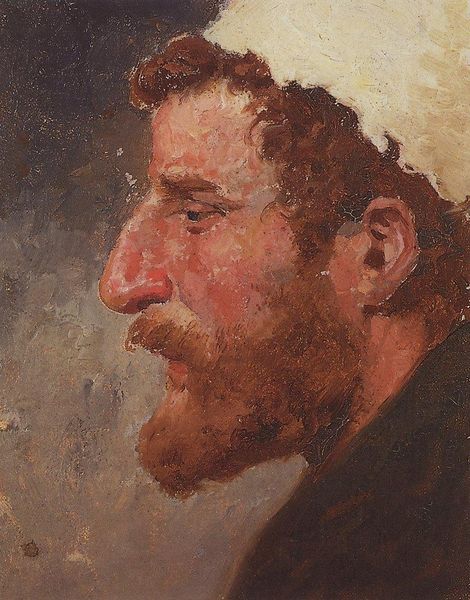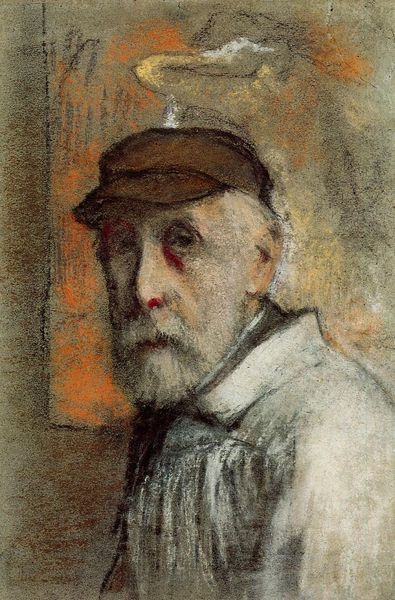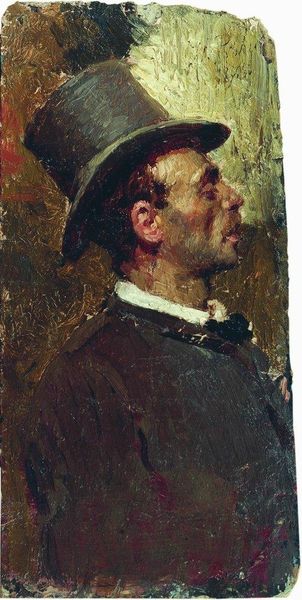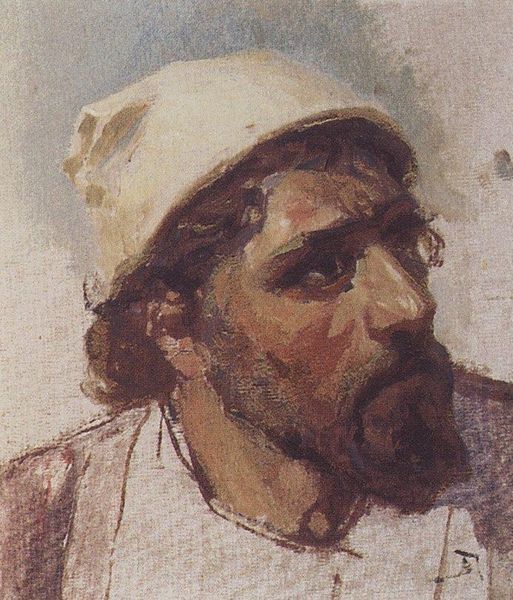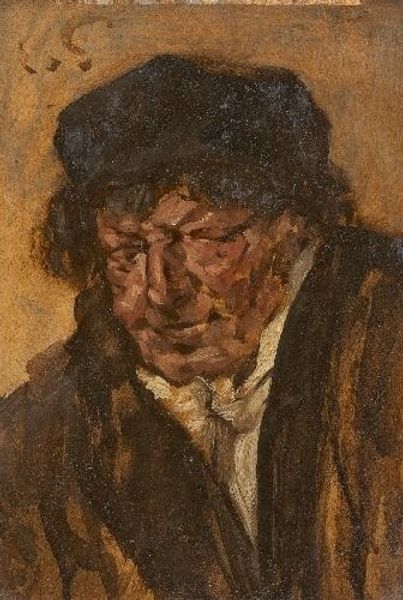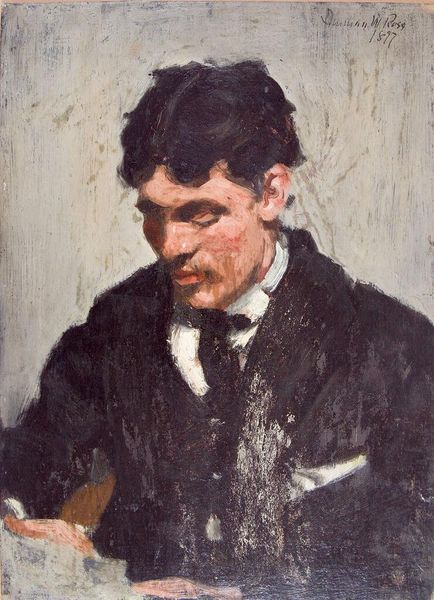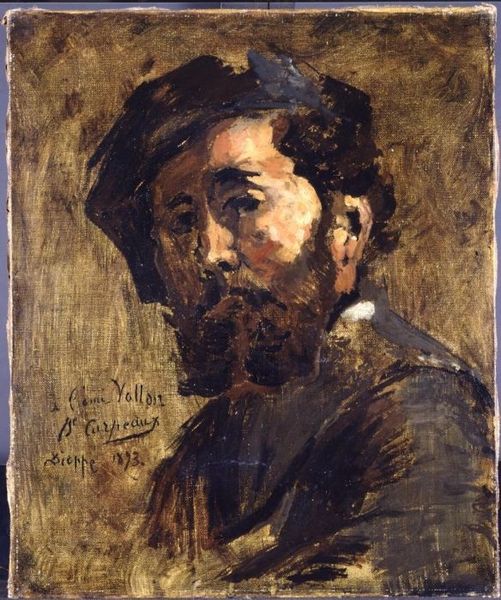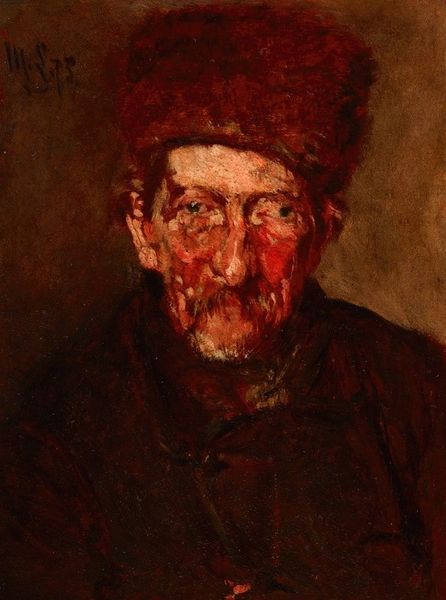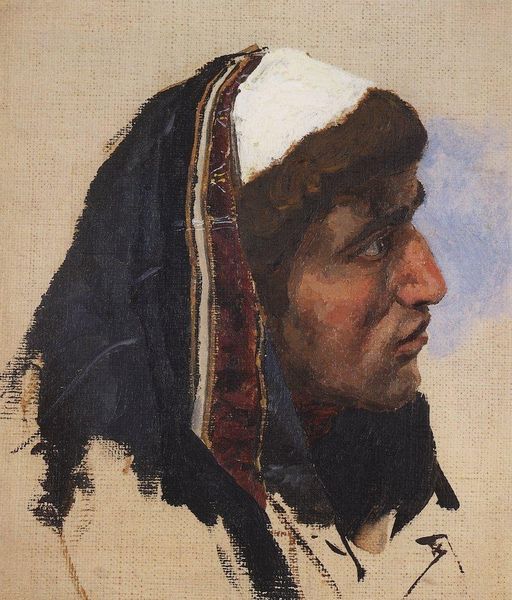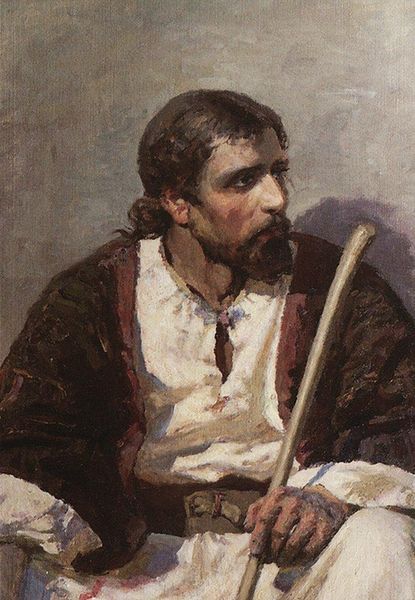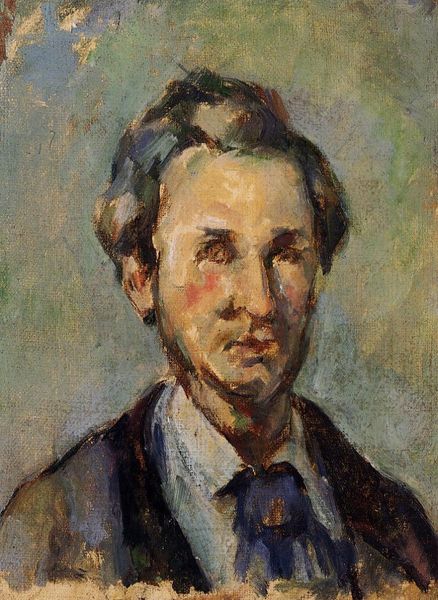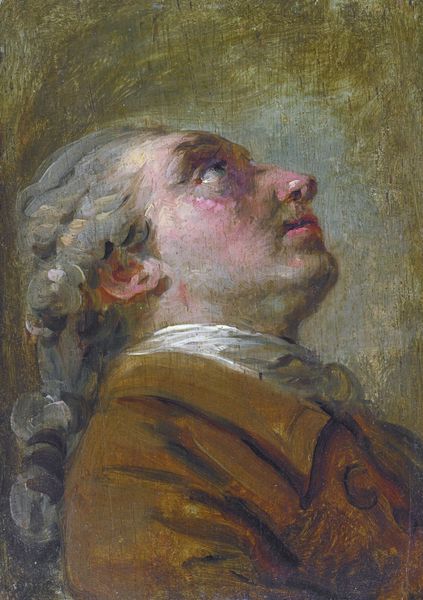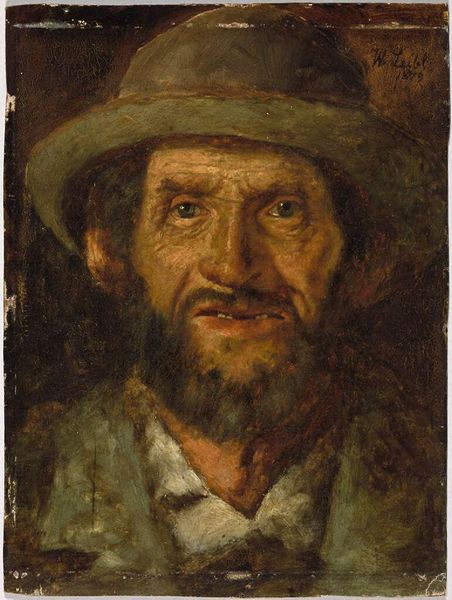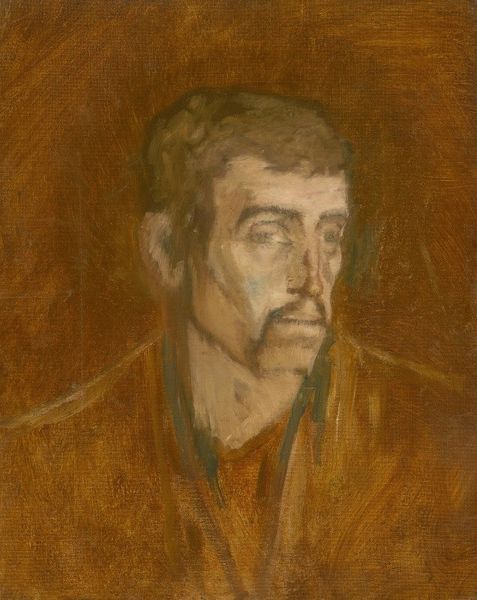
Copyright: Public domain
Curator: Look at this piece by Vasily Polenov from 1885. It's an oil painting titled "Head of red-headed man with yellow cap." It seems deceptively simple at first glance. Editor: There is a deep contemplative, almost melancholic mood emanating from the portrait. The closed eyes make it so evocative. Curator: Indeed. It’s important to understand the Realist movement that informed Polenov's work. It aimed to depict subjects honestly, avoiding idealization. One wonders who this person was and in what setting Polenov encountered them? Editor: His eyes are closed. Closed eyes often symbolize inward reflection, meditation, sleep, even death sometimes. The red hair suggests a fiery temperament or perhaps just robust health. And then there is this peculiar hat… Do we have any details about his story? Curator: Not specifically regarding the subject. What is more relevant here is that in this period artists are searching for alternatives to Academic art, eager to capture the common person, so they start making more studies. I’d also link this painting to a growing interest in the psychology of perception. Editor: I do find the choice of a yellow cap odd though. Yellow is traditionally associated with intellect, wisdom but it can also symbolize deceit or cowardice. Given that cap and considering how his head is angled downwards and to his right, the cap does make me slightly apprehensive. Curator: Interesting! But there is nothing inherently wrong, I’d argue, but there is undoubtedly a certain degree of sensitivity toward representing this particular individual. His likeness became a way to show an everyman who has a complex personality like every person living around the artist himself. It’s that kind of commitment to showing ordinary existence that marked Realism and was considered so groundbreaking back then. Editor: I agree. Despite that slight unease that it gives, this close-up study truly feels as if one is about to know more about this unknown individual. His features are quite telling. Curator: Yes. Now, after our discussion, it invites deeper questioning not just of art history, but of our own perception and relationship with others around us, right? Editor: Precisely. It serves as a window into both a specific historical context and universal human experiences that keeps resonating even now.
Comments
No comments
Be the first to comment and join the conversation on the ultimate creative platform.
